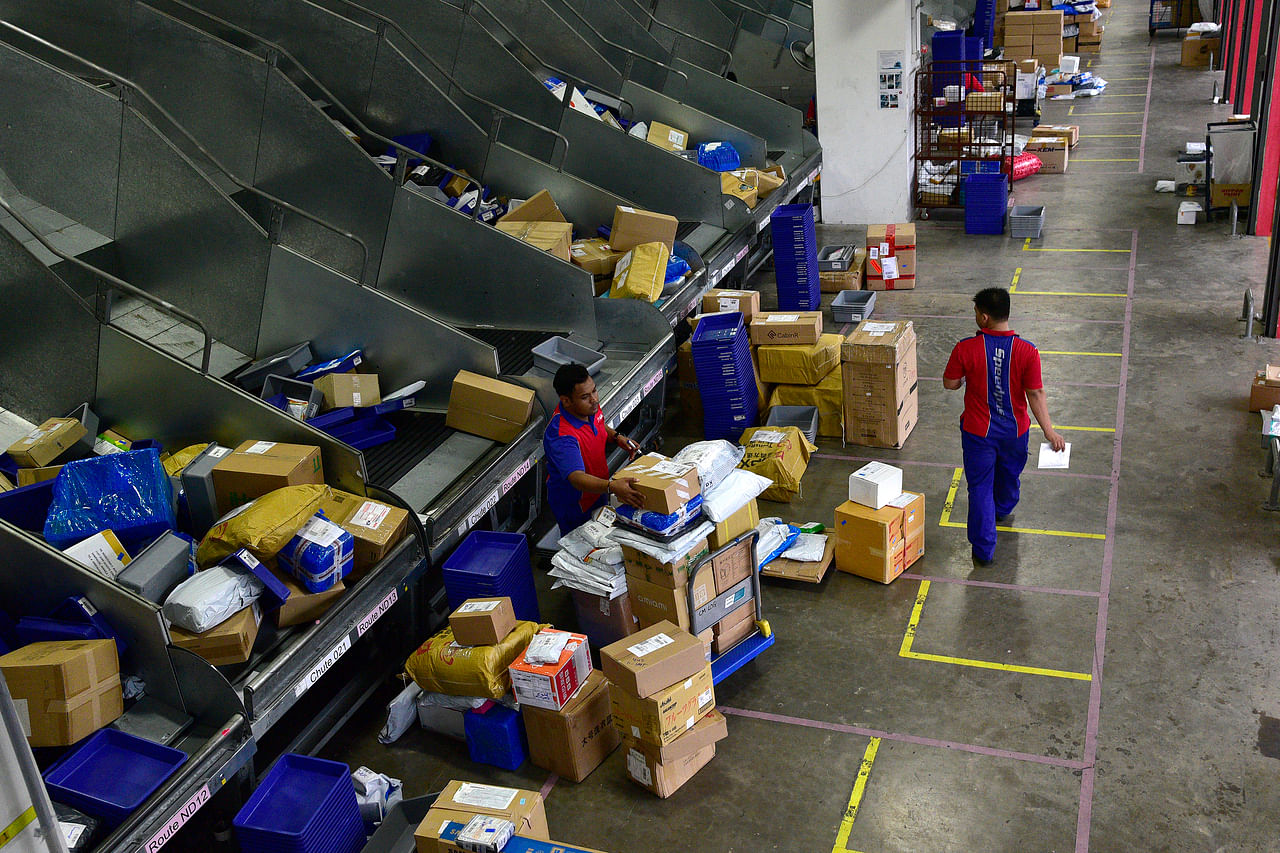E-commerce sales in S'pore expected to reach $19.6b by 2027, despite slower growth this year
Sign up now: Get ST's newsletters delivered to your inbox

E-commerce sale are projected to grow to US$9 billion (S$12.6 billion) this year, an increase from US$8 billion in 2021.
PHOTO: ST FILE
Follow topic:
SINGAPORE - E-commerce sales in Singapore are expected to reach US$14 billion (S$19.6 billion) by 2027, despite slower growth seen in 2022 amid inflationary pressures and supply chain disruptions, according to a report released by Facebook parent Meta and Bain & Company on Tuesday.
This forecast reflects the continued optimism regarding South-east Asia's long-term growth outlook, which is underpinned by the steady growth of the digital consumer population in the region.
Digital consumers in South-east Asia are expected to account for about 88 per cent of the population - or 402 million people - by 2027, the latest Sync South-east Asia Report noted.
As a whole, e-commerce gross merchandise value in South-east Asia is expected to hit US$280 billion by 2027, compared with an estimated US$129 billion in 2022 and US$112 billion in 2021.
E-commerce sales in Singapore are projected to grow to US$9 billion in 2022, an increase from US$8 billion in 2021. But this was much slower than the 73 per cent year-on-year jump in sales seen in 2021.
However, consumers here spent more per transaction this year, with the online basket size increasing to US$131 in 2022 from US$119 in 2021.
Across the region, the average basket size went up to US$56 this year compared with US$52 in 2021.
During a media briefing on Tuesday, Bain & Company partner Praneeth Yendamuri said that contributing factors to this increase are consumers’ increasing familiarity with online platforms and the occurrence of more frequent flash sales.
E-commerce players’ improved delivery times, security of supplies, product quality and return policies have also helped, he added.
The Sync South-east Asia study, conducted in June, is based on a survey of about 16,000 digital consumers across six countries in the region, including Singapore.
While offline shopping channels have seen some recovery with the easing of Covid-19 measures, online channels still remain important platforms for consumers in the region.
About 97 per cent of Singapore's population aged 15 and above are digital consumers, one of the highest proportions in South-east Asia.
The report found that about three-quarters of Singapore consumers use online channels such as social media for discovering and evaluating products.
Around 31 per cent of Singaporeans said they purchased more streaming and content creator-related products in 2022 compared with last year.
At the same time, users here are using more online platforms and switch brands more frequently, with better value for money and better quality products given as the top reasons for the switch.
Singapore consumers were found to be using 10 online platforms in 2022, compared with six in 2021.
The study found that South-east Asian consumers are at a new stage of evolution post-pandemic, with consumer appetite for integrated shopping experiences that effectively blend online and offline services continuing to drive e-commerce in the region.
“As consumers seek more engagement, we are also seeing the rise of the creator economy in the region,” said Mr Benjamin Joe, vice-president of South-east Asia and emerging markets at Meta.
"Creators are emerging as brands and retail channels, and it is important that businesses find effective ways of marketing through these channels."
In South-east Asia, e-commerce marketplaces account for 51 per cent of online spending, while alternative e-commerce platforms, such as business messaging and live shopping, account for 22 per cent.
Moreover, Singaporeans are regional leaders in the adoption of future technologies.
More than four in 10 Singaporeans used metaverse-related tech such as cryptocurrencies and non-fungible tokens (NFTs) in 2022, and almost the same percentage used fintech solutions like Internet banking and e-wallets in the past year.
The study found that South-east Asia sees a higher penetration of e-wallets, cryptocurrencies and NFTs compared with most other markets such as China, the United States, European Union and Japan, with almost 70 per cent of consumers in South-east Asia using at least one metaverse-related tech in the last year.

